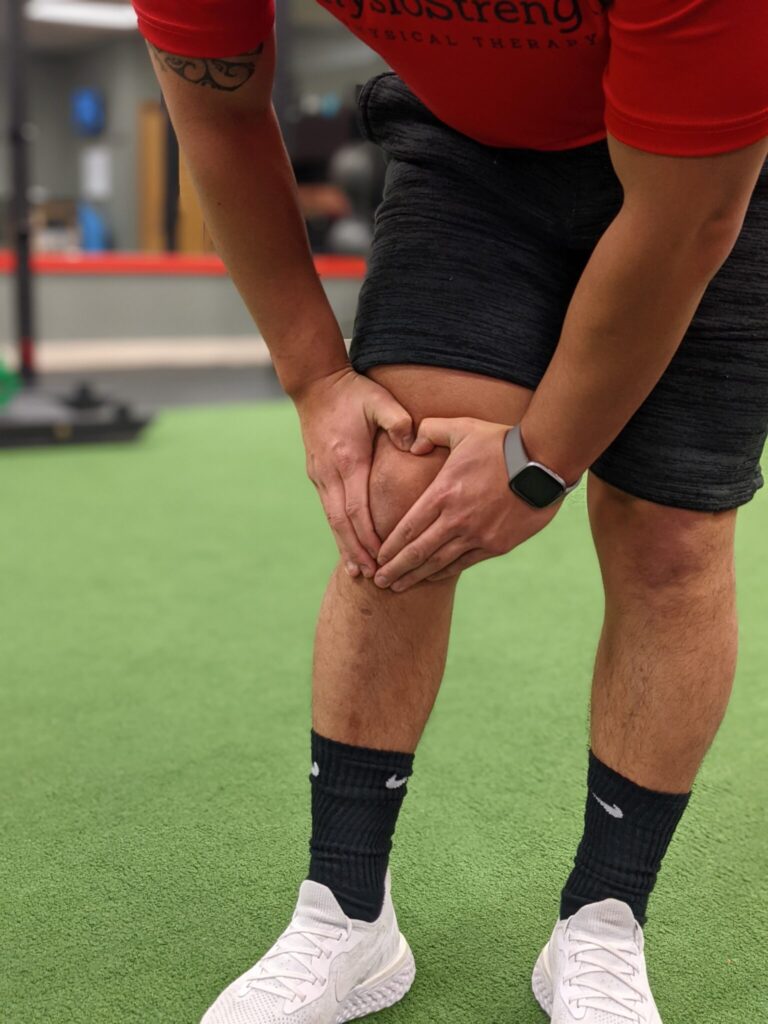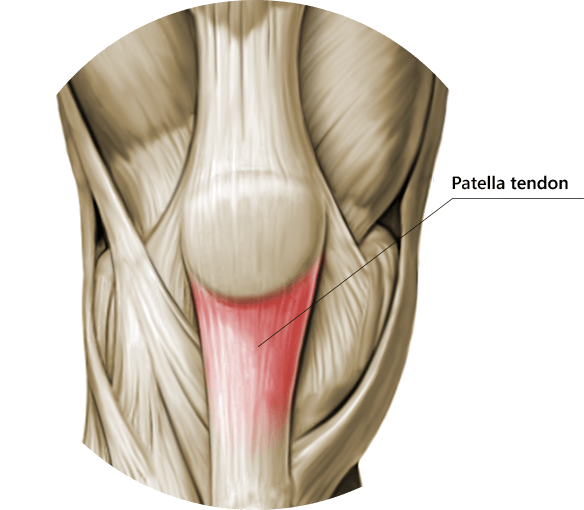Patellar Tendinopathy: Physical Therapy Treatment and Management

Written by Dr. Abby Walter
What is Patellar Tendinopathy:
Patellar Tendinopathy, also known as “Jumper’s knee,” is a common condition that presents as pain in the front of the knee, below the knee cap. Tendinopathy is a general term for a chronic tendon condition that fails to heal. This condition is primarily found in relatively young athletes (15-30 years old), although it can occur at all ages. Jumper’s knee is commonly found in individuals who participate in sports activities with repetitive jumping and running including basketball, volleyball, tennis, and football.
What causes Patellar Tendinopathy?
Our tendons work by repetitively storing and releasing energy (similar to a spring). For example, when we’re jumping, our tendons release stored elastic energy, and when we’re landing they help to absorb and store energy again. Overuse of the tendon can lead to injury and a limited ability for the tendon to heal after exercise sessions. Chronic repetitive overloading and mechanical errors during exercise are the most common cause of patellar tendinopathy.
How do you treat Patellar Tendinopathy?
Contrary to what you might believe, complete rest is NOT the best treatment option for tendinopathy. Research shows that exercise and loading of the tendon can improve overall tensile strength of the tendon, and help you return to your previous level of function. Treatment of patellar tendinopathy is primarily focused on load management, meaning how much demand are you placing on the patellar tendon, and how is it responding to these demands.
Warm up Phenomenon:
Many individuals with patellar tendinopathy describe knee pain and stiffness that eases with activity and after a warm up. However, when rehabilitating tendinopathy, patient’s should still be mindful of the “warm up phenomenon.” Often pain will worsen after repetitive high loading activities (jumping, running), if the tendon is not ready for these heavier loads. A general outline for the rehabilitation of this condition is as follows:
Stage 1: Isometrics: static strength training, beneficial during initial stages of treating patellar tendinopathy. Isometrics have been found to maintain strength and even decrease pain in the early stages for tendinopathy rehab.
- Examples: wall squat hold, leg extension hold (with band or machine), split squat hold, leg press hold.
- Dosage: 3-5 repetitions of 45 second hold
- Tips:
- Pain can be 3/10 to begin, but don’t let it increase more than 5/10 during exercise.
- Pain should settle within 24 hours otherwise your load tolerance has been exceeded.
- Isometrics can be very helpful for “in season” athletes, to help with pain reduction during their sporting activities.
Stage 2: Isotonics (concentric/eccentric strengthening): Once pain has subsided with isometric exercises, progression to isotonics (concentric/eccentric) exercises.
- Examples: double leg squats, single leg squats, single leg decline squats, leg press machine.
- Dosage: 3-4 sets at a load of 15RM. Progress to 6-8RM (heavier loads, with less reps). If you aren’t familiar with proper squat form, we recommend reading this.
- Tips:
- Focus on slow control with a 3 second count for both concentric/eccentric phases of the movement.
Stage 3: Energy storage exercises:
- Examples: progress to jumping, cutting, and agility drills.
- Dosage: Progress volume and intensity of jumping activities. Progress from double leg to single leg.
See the Instagram videos below for some examples of the above mentioned exercises. Don’t forget to follow @physiostrength on Instagram!
To summarize, patellar tendinopathy can be a frustrating injury to manage, especially with understanding load management. It is important to remember that progressively “loading” the tendon is important and completed rest should be AVOIDED with this condition. If you’re having patellar tendon pain, and would like a formal assessment of your knee, set up an appointment with us at PhysioStrength. We can assist you in developing a comprehensive program, so that you can return to the activities you love without knee pain!
References:
Malliaras P, Cook J, Purdam C, Rio E. Patellar Tendinopathy: Clinical Diagnosis, Load Management, and Advice for Challenging Case Presentations. The Journal of orthopaedic and sports physical therapy. 2015 Sep:1-33. (level of evidence: 2a)
Van Rijn D, van den Akker-Scheek I, Steunebrink M, Diercks RL, Zwerver J, vander Worp H. Comparison of the Effect of 5 Different Treatment Options for Managing Patellar Tendinopathy: A Secondary Analysis. Clin J Sport Med. 2019;29(3):181-7.


